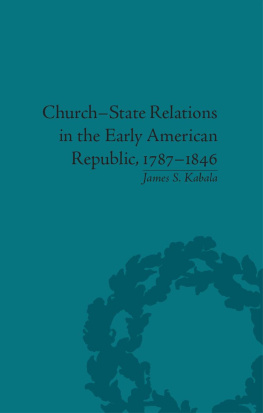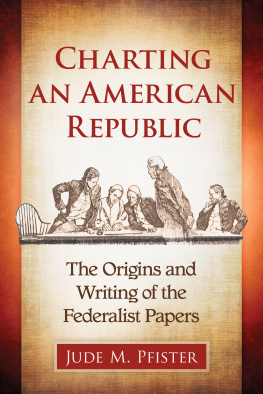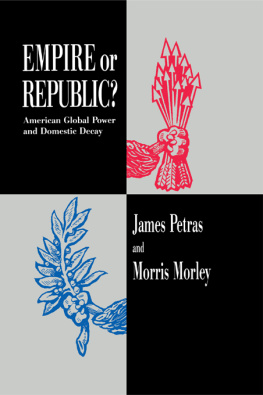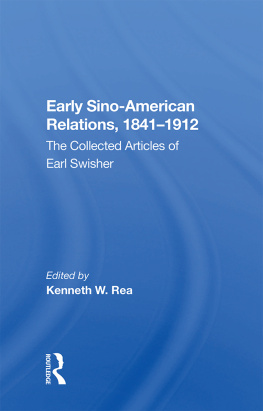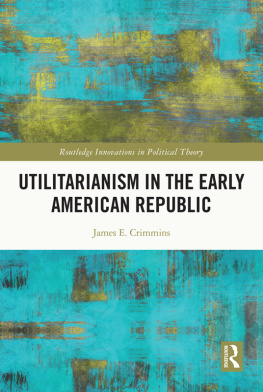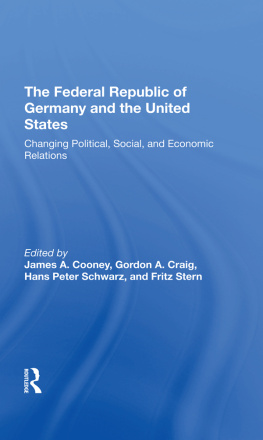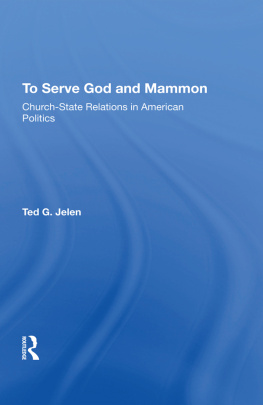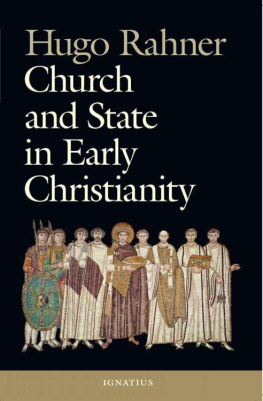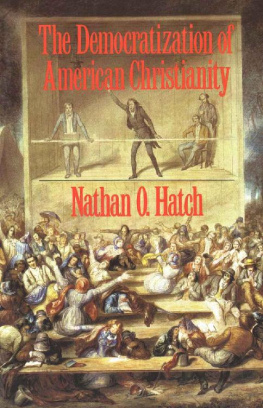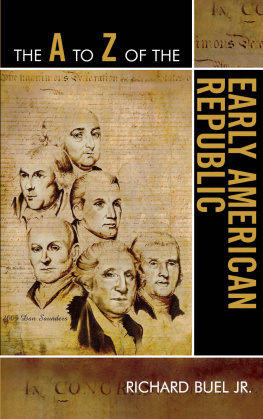CHURCHSTATE RELATIONS IN THE EARLY AMERICAN REPUBLIC, 17871846
CHURCHSTATE RELATIONS IN THE EARLY AMERICAN REPUBLIC, 17871846
BY
James S. Kabala
First published 2013 by Pickering & Chatto (Publishers) Limited
Published 2016 by Routledge
2 Park Square, Milton Park, Abingdon, Oxon OX14 4RN
711 Third Avenue, New York, NY 10017, USA
Routledge is an imprint of the Taylor & Francis Group, an informa business
Taylor & Francis 2013
James S. Kabala 2013
To the best of the Publishers knowledge every effort has been made to contact
relevant copyright holders and to clear any relevant copyright issues. Any omissions that come to their attention will be remedied in future editions.
All rights reserved, including those of translation into foreign languages. No part of this book may be reprinted or reproduced or utilised in any form or by any electronic, mechanical, or other means, now known or hereafter invented, including photocopying and recording, or in any information storage or retrieval system, without permission in writing from the publishers.
Notice:
Product or corporate names may be trademarks or registered trademarks, and are used only for identification and explanation without intent to infringe.
BRITISH LIBRARY CATALOGUING IN PUBLICATION DATA
Kabala, James S.
Church-state relations in the early American Republic, 17871846.
1. Church and state United States History 18th century. 2. Church and state United States History 19th century. 3. United States Church history 18th century. 4. United States Church history 19th century.
I. Title
261.7097309033-dc23
ISBN-13: 978-1-84893-314-9 (hbk)
Typeset by Pickering & Chatto (Publishers) Limited
CONTENTS
Many institutions and individuals have contributed to the making of this book. I was privileged to use the collections of some of the finest research libraries in the world. My first thanks in this regard must go to the institutions from which I had the honour of receiving fellowships: the American Antiquarian Society in Worcester, Massachusetts; the Gilder Lehrman Institute in New York City; the Filson Historical Society in Louisville, Kentucky; and the Huntington Library in San Marino, California. I am particularly indebted to the staff at the American Antiquarian Society, where I spent the greater part of a year as a researcher in addition to my later month as a fellow. I would also like to thank other institutions at which I did research: the John D. Rockefeller Jr., John Hay, and John Carter Brown Libraries at Brown University in Providence, Rhode Island; the other libraries in the InRhode system, especially those at Providence College and Rhode Island College; the New-York Historical Society and the New York Public Library in New York City; the Library of Congress and the National Archives in Washington, DC; the Library Company of Philadelphia and the Presbyterian Historical Society in Philadelphia; and the Windham Judicial District Courthouse in Putnam, Connecticut.
I would like to thank Seth Rockman for being an excellent dissertation adviser in every respect. I would also like to express my appreciation to those who read or otherwise assisted in the creation of the manuscript: Michael Vorenberg, Carl F. Kaestle, Gordon S. Wood, all my friends and former colleagues in the Brown University History Graduate Program, Jonathan Rowe, John Fea, the anonymous readers here at Pickering & Chatto and also those at the Journal of Church and State (in which an earlier and abridged version of was published as an article). I am also grateful to my editors, Daire Carr and Ruth Ireland, and to copy editor Frances Lubbe. Finally, I would like to thank all my family and friends who gave me encouragement and support throughout the years that this book was in development. My brother Dan deserves special thanks for assisting me in the organization of the index. I would especially like to thank my parents, Stanley and Catherine (Mahoney) Kabala, for their love and support and for the many hours they put into reading and editing the manuscript. I dedicate this book to them.
Original spellings and capitalization appear as they were in the sources. (In most cases quotations are directly from primary documents, but in a few instances primary documents are quoted from secondary sources in which they appear. It is possible that some of these secondary authors used different editorial standards and already made changes to spelling and capitalization.) In a few cases where there might be confusion for the modern reader or where the spelling or usage was clearly nonstandard even at the time, the usage has been marked with a sic or a necessary punctuation mark has been inserted in brackets. One usage worthy of special note is that many writers, both believers and non-believers, wrote christian with a lowercase c. All italics are also original unless otherwise noted.
It is also worthy of note that reporters of debates in legislatures and constitutional conventions often reported the debates in the third person; therefore any direct quotations from those debates follow the same format.
The terms Democratic-Republican and Republican are used interchangeably for the followers of Thomas Jefferson and James Madison. The former name is often used by historians in order to clarify that this defunct party is not the same group as the Republican Party that was founded in 1854 (after the terminal date of this book) and that still exists today. However, simply Republican was the name more commonly used at the time. (Neither the Federalists nor the Democratic-Republicans were a fully organized political party in the modern sense, so neither adopted an official name.)
However sagaciously devised and balanced our national constitution of government may be, declared Rev. Samuel Austin of Worcester, Massachusetts, in 1811, it has one capital defect. It is entirely disconnected from Christianity.
Such sentiments are striking to the modern reader: present-day believers that the United States was founded on Christian principles often claim the Founding Fathers for their cause, while advocates of churchstate separation often presume that the issue was a settled matter after the ratification of the First Amendment in 1791. This book will complicate such assumptions by exploring sixty years of contentious debate in American civic culture over the proper role of religion in public life. Between the 1780s and the 1840s, clergymen, legislators, jurists and pamphleteers argued over whether the government could fund Christian missionaries, whether the government should proclaim fast and thanksgiving days, whether it was proper for Christians to pledge to vote only for Christian candidates, whether there should be religious restrictions on who could serve in public office or testify in court, whether blasphemy prosecutions were legitimate, whether public schools could offer a religious curriculum, whether state legislatures should open each days session with prayer and many more such issues. Instances of the governments long-standing entanglement with religion, such as the funding of religiously affiliated schools among the Indian tribes, can seem startling today. In other areas, however, separation between religion and government was more strongly enforced than today. The mail was delivered on Sundays, and a nationwide petition campaign to end this practice not only failed but caused a strong backlash. Several state legislatures, at least for a time, abolished the position of chaplain and the practice of opening each days sessions with prayer. In short, debate over the proper relationship between religion and government was as divisive two hundred years ago as it is today and involved people from all denominations, parties and regions. Participants in these debates often viewed themselves as engaged in a struggle between the stark alternatives of an explicitly Christian nation and a completely secularized government, but the full story was more complicated.


